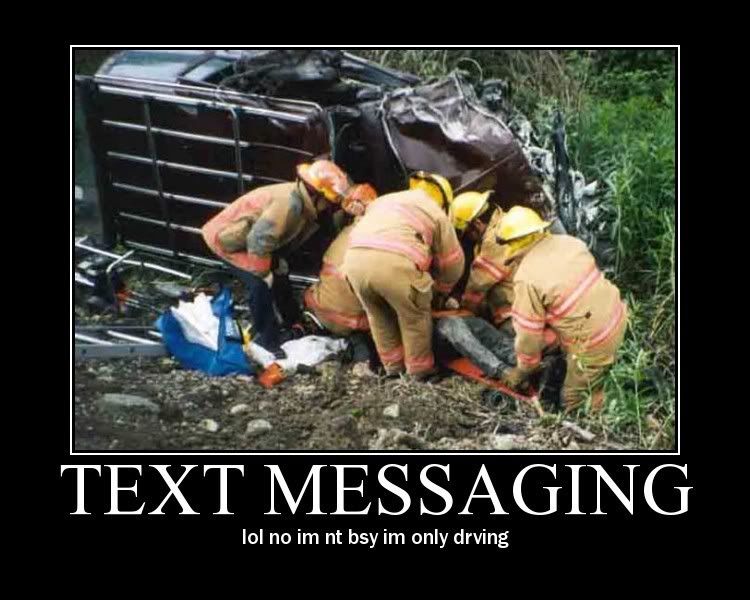 Since many state and local governments are outlawing e-texting and cell phone talking while driving, companies are lining up to try and cash in on the legislation. Be it for employers to cut back on hired-driver texting, or by parents trying to keep the kids in line, the basic idea boils down to making the device recognize when it's in motion, then cutting off the ability for use.
Since many state and local governments are outlawing e-texting and cell phone talking while driving, companies are lining up to try and cash in on the legislation. Be it for employers to cut back on hired-driver texting, or by parents trying to keep the kids in line, the basic idea boils down to making the device recognize when it's in motion, then cutting off the ability for use.Drive Safely Corporation's idea is to use a phone's GPS ability to "see" when the phone is moving at more than 15 miles per hour. To make legitimate use by a passenger, the phone will flash up a series of letters and numbers--the "legit" user then simply keys back in the series of characters. The designer's thinking is that a driver won't be able to concentrate on driving, and keying in the code to access the road.
We can already hear many parents clearing their throats. Tell us, what teen-aged, 'got the world by the tail' driver isn't going to try and prove he can beat that system and still keep the family fliver out of the ditch? Is there a "more harm that good" issue in this one? Other ideas from the safety engineers include an embargo on incoming or perhaps outgoing text messages until the vehicle comes to a stop.
The drawbacks? All of the new safety technologies come with a price, usually an up-front software download cost, and then a monthly subscription fee. And since the software can't determine whether the phone is in an RV, car, or truck--where texting would indeed be dangerous, versus whether the phone is on say, a bus or commuter train, there's always the "override" to allow for use in the latter. Somebody who really wants to text while driving has got the "out" with the override.
This leads to but one question: Can common sense trump out over technology?
photo commentary by mmajunkie92 on photobucket
No comments:
Post a Comment